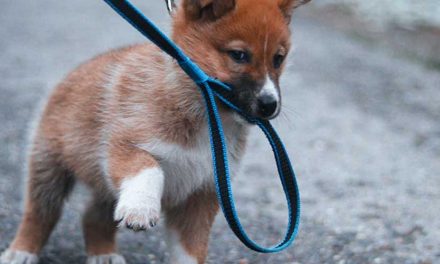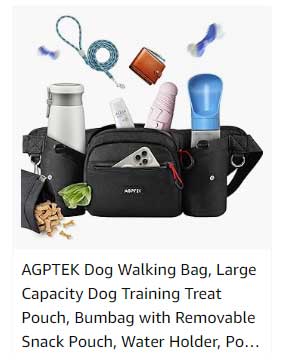Are you often met with pleading puppy eyes under the dinner table? Maybe your dog’s subtle tactics have escalated to outright paw-patting and drooling, leaving you aching with guilt for the crumbless floor you walk away from after every meal. No owner wants to deny their furry companion the bounty of joy that food can provide, but the perpetual act of begging has deeper roots than just a desire for a bite of your meal.
BEGGING AT THE TABLE
In this comprehensive guide tailored for dog owners, we’ll dissect the behavior of begging at the table, understanding its triggers, your dog’s perspective, and effective, humane strategies to leave begging at the door – or, in this case, under the table.
THE SCIENCE OF BEGGING
Begging is a learned behavior. Canines are experts at observing patterns and linking their actions to desirable outcomes. In the case of table scraps, their persistence is often rewarded with a fragment of the family feast. From this reinforcement, the behavior loop is completed: stimulus (you take a bite), response (your dog comes over and begs), and consequence (sometimes, you yield a morsel).
But what’s crucial to understand is that your dog doesn’t make the link to your annoyance or the times you say “no.” They are wired to respond to the times you cave. This intermittent reinforcement solidifies the habit, making it one of the hardest to break.
BEGGING FROM YOUR DOG’S PERSPECTIVE
The act of begging is more than just a physical response to tantalizing smells. For dogs, begging is an expression of their social nature, a desire to join in the communal activity of eating. This stems from their pack instincts, where meals were shared among members as a bonding experience.
Your dog, with its sensitive nose, easily detects the presence of delicious food. The very act of you sitting down to eat can trigger their ‘pack’ response. The instance you share your meal at the dinner table, your dog sees the parity shared among family members and wants to be included.
THE CANINE QUANDARY
To curb this behavior effectively, we need to appreciate the canine quandary – torn between instinct and training. We’ll explore this tug-of-war and how to lead your pup down a path that ends with good behavior.
UNDERSTANDING YOUR DOG’S BASIC NEEDS
Before addressing begging, it’s vital to ensure your pup’s basic needs are met. Hunger, in particular, isn’t an excuse for begging – regular, portioned mealtimes help establish a routine and manage expectations around food.
BUILDING POSITIVE EATING HABITS
Use mealtimes as a training opportunity. Make your dog sit or perform a simple command before feeding to establish meal courtesy and mutual respect at the food bowl.
SOCIALIZING DURING MEALTIMES
Make your dog sit and watch as you prepare your meal, rewarding them for calm, polite behavior. Over time, this association with your meal prep will lessen the ‘chances’ or ‘demands’ afterwards.
THE POWER OF CONSISTENCY
Consistency is key to changing any behavior. It’s just as essential as the reinforcement that perpetuates begging in the first place. To achieve consistency, it’s important to set ground rules and communicate these to all members of the household.
CREATING A FAMILY PACT
Discuss and agree upon the family rules when it comes to feeding the dog. Everyone should adhere to these guidelines without exception.
CONSISTENT RESPONSES
Agree on a consistent response to begging. Whether this is ignoring your pup or redirecting their attention, make sure it is reinforced each time, by everyone.
THE ROLE OF ENVIRONMENT
The home environment can set the stage for expected behavior. Avoid feeding your dog from the table or sharing your plate – table scraps signal to your dog that begging can be successful.
REDUCING BEGGING THROUGH TRAINING
Training is a powerful tool in developing a harmonious eating environment. By training your dog to exhibit an alternative, desirable behavior in place of begging, you can shift the dynamic around mealtime.
“PLACE” AND “STAY” COMMAND
Use training to establish a specific place for your dog to settle during mealtime. The “stay” command can help reinforce this and redirect their attention elsewhere.
BUILDING SELF-CONTROL
Practice exercises that build self-control, such as holding a treat in your hand while your dog waits. Only reward when they’re calm and patient, gradually working up to longer waits.
ADDRESSING THE NUANCES OF BEGGING BEHAVIOR
Dogs are adept at adjusting their tactics when their initial begging efforts are ignored. It’s essential to stay one step ahead and be ready to address these nuances.
MANAGING BODY LANGUAGE
Be aware of your dog’s body language – a gentle nudge may escalate to a more direct attempt if they sense that their initial cues aren’t working.
THE POWER OF TIMING
Redirect your dog’s attention before they engage in outright begging. This could be a simple game of fetch or a chew toy to occupy them during your meal.
THE ESSENTIAL INGREDIENTS OF A NO-BEG POLICY
Establish a firm “no-beg” policy in conjunction with your household and stick to it. Here are the essential ingredients for a no-beg mealtime:
CLEAR SIGNS THAT MEALTIME IS EXCLUSIVE
This can be a well-defined feeding area or your dog’s designated space during mealtime.
CONSISTENT COMMUNICATION
Use the same command or cue to indicate the beginning of your meal and your dog’s cue to settle in their place.
ALTERNATE REINFORCEMENT
Reward your dog with a special treat in their bowl in their space, post-meal, as a sign of reward for your dog’s compliance
INSTILLING NEW FAMILY TRADITIONS AROUND FOOD
Shift the culture of mealtimes from shared plates to shared experiences. Instead of giving in to begging, involve your dog in a unique, planned meal event that’s focused on them. Make a show of preparing their meal and follow it with a hearty round of play or a post-dinner walk.
DOG-FRIENDLY DINNER NIGHTS
Schedule ‘dog-friendly’ meals where you and your dog eat similar foods, prepared especially for them.
FOOD TOYS AND DISPENSERS
Use food-dispensing toys as a form of entertaining your dog while you eat, providing a mentally stimulating activity that’s also rewarding.
By implementing these strategies and understanding your dog’s perspective, you can transform mealtimes from battles to bonding experiences. Remember, patience and persistence are crucial – just like training any habit, breaking the begging cycle will take time. But the result – a respectful, enjoyable meal in each other’s company – is well worth the effort.
Credit › Original photo by charlesdeluvio on Unsplash












